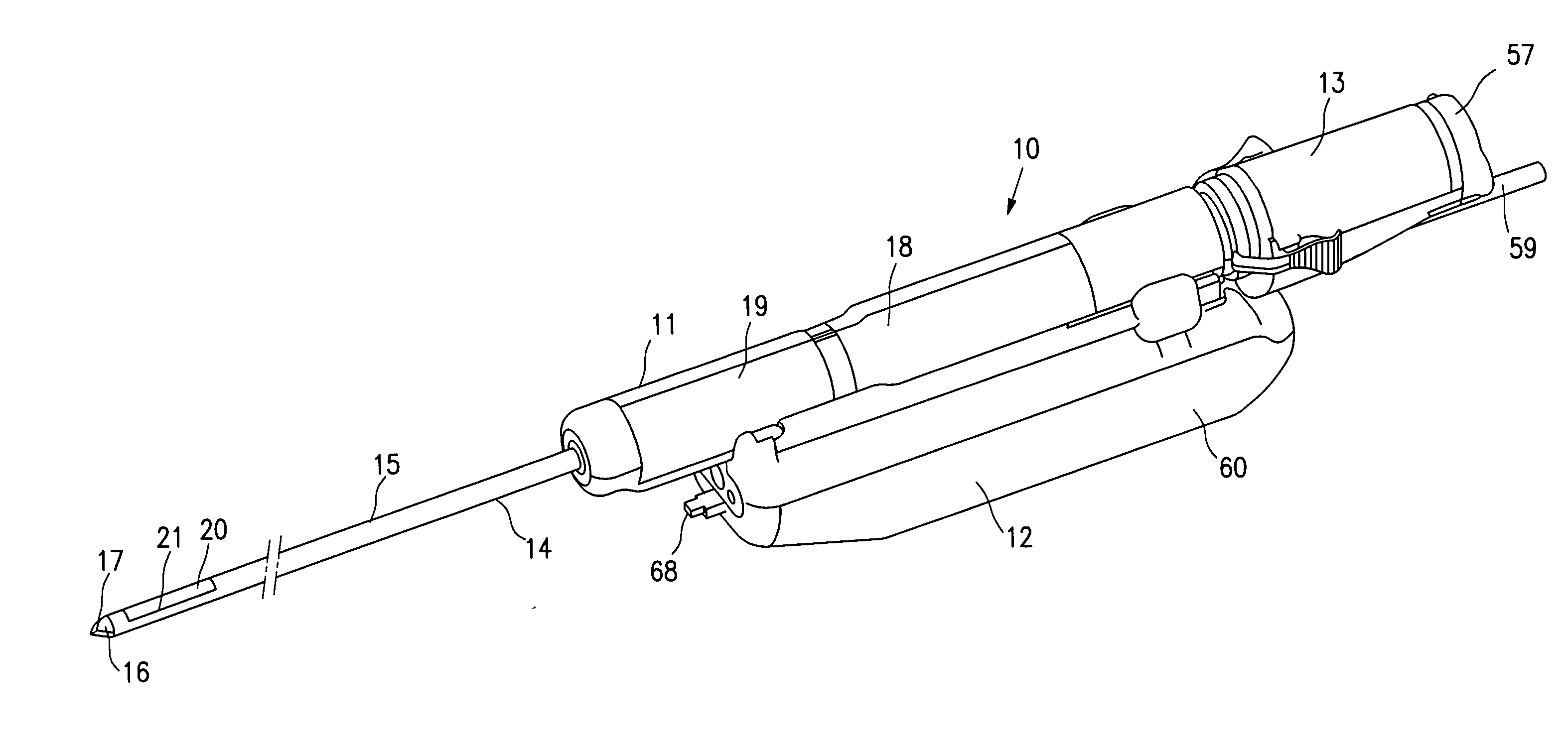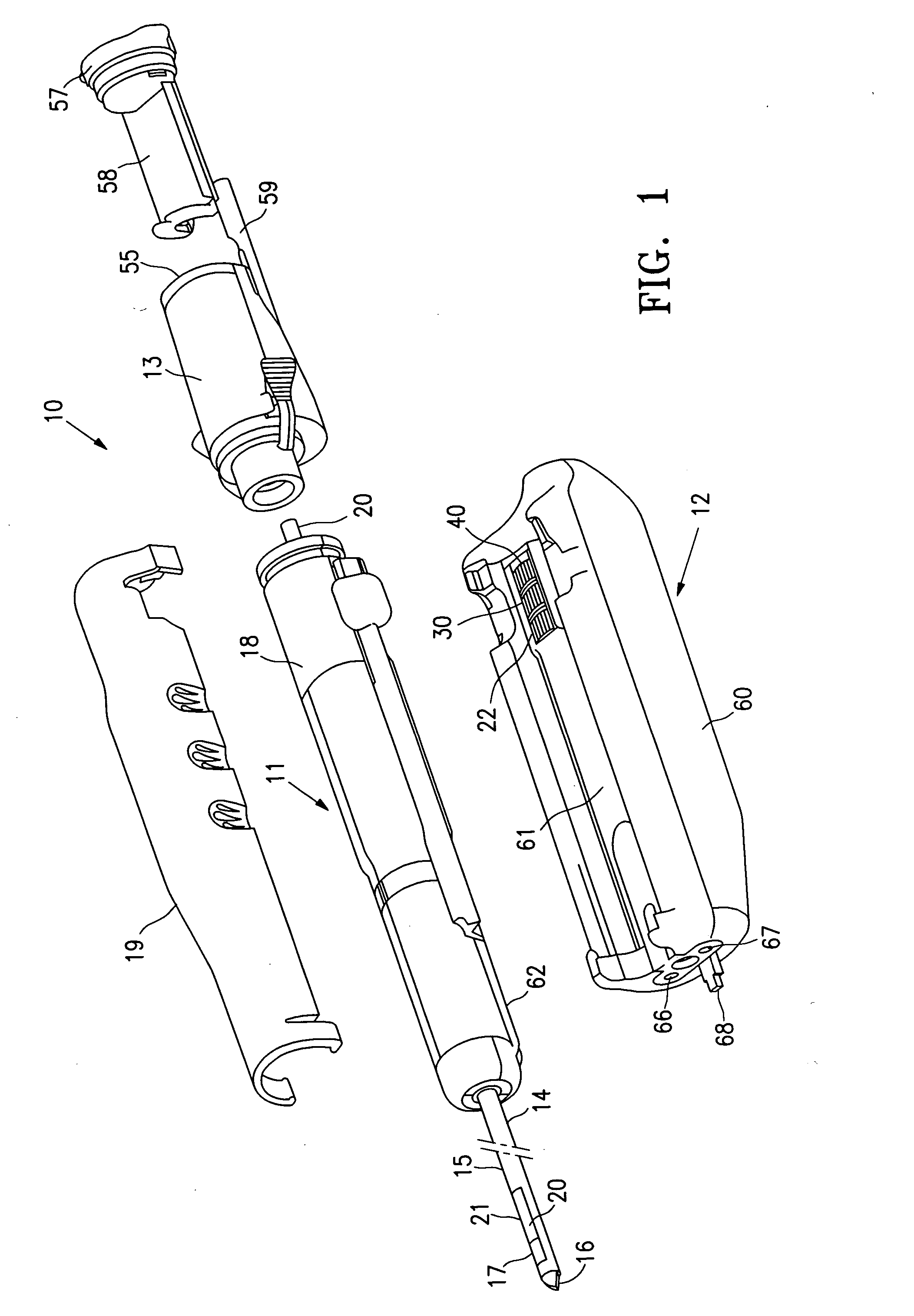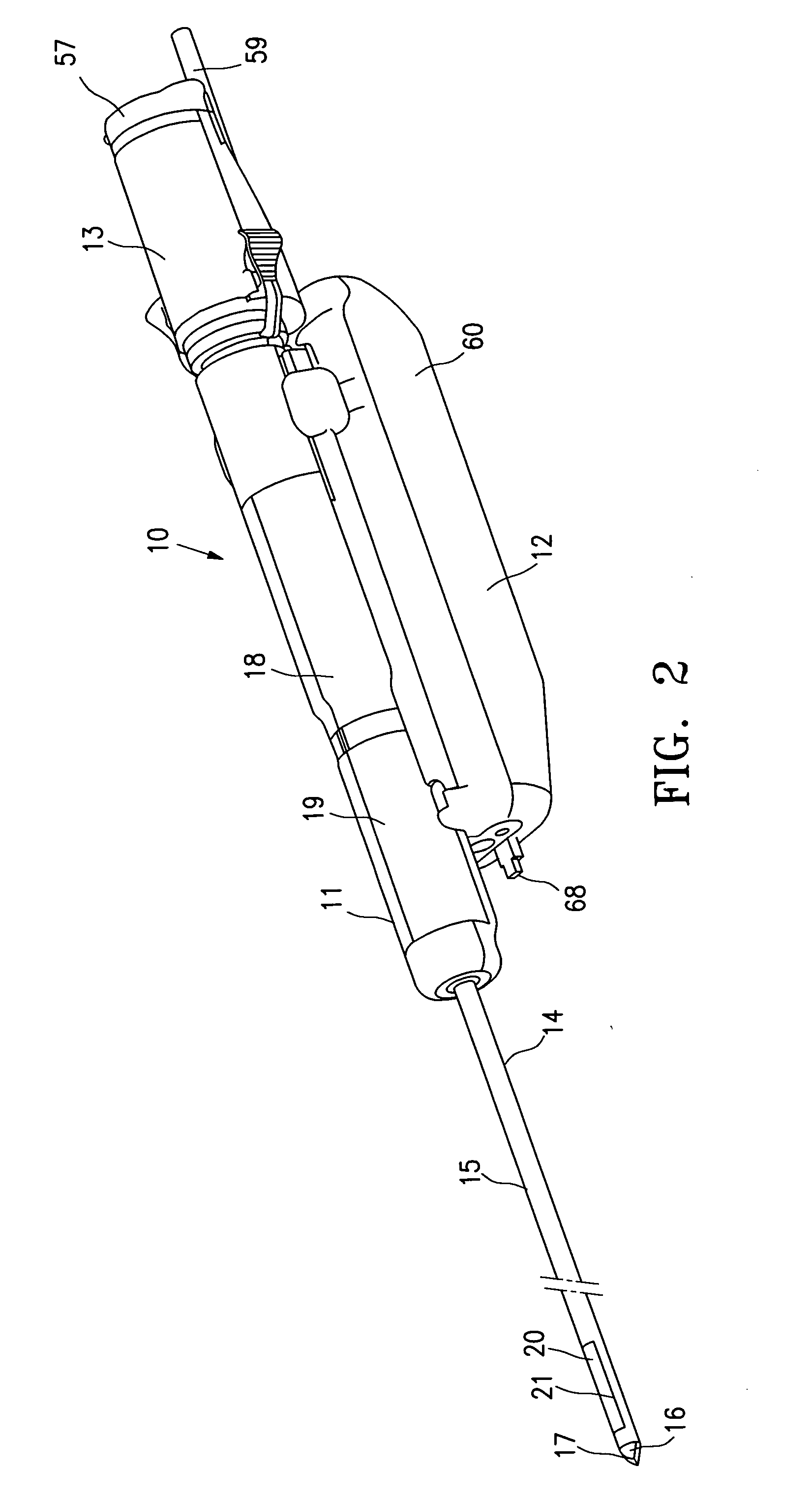Biopsy device with selectable tissue receiving aperture orientation and site illumination
a biopsy device and aperture orientation technology, applied in the field of tissue removal devices, can solve the problems of not always being suitable for use in conjunction with magnetic resonance imaging
- Summary
- Abstract
- Description
- Claims
- Application Information
AI Technical Summary
Benefits of technology
Problems solved by technology
Method used
Image
Examples
Embodiment Construction
[0031]FIGS. 1-3 illustrate a biopsy system 10 embodying features of the invention which includes a disposable probe component 11, a driver component 12 and specimen collector 13.
[0032] The probe component 11 generally includes an elongated distal shaft 14 having a tubular section or cannula 15 with a tissue penetrating tip 16 on the distal end thereof and an open, tissue receiving aperture 17. The probe component 11 also includes a probe housing 18 with a housing cover 19 which is configured to interfit with the driver component 12. A tissue cutter 20 is slidably disposed within the probe and has a distal cutting surface 21 which severs tissue which extends through the tissue receiving aperture 17.
[0033] Details of the probe component 11 are further shown in FIGS. 4A and 4B. The probe housing 18 has a mechanical system for rotating the housing and the tubular section 15 secured thereto to control the angular position of the tissue receiving aperture 17 and for moving the tissue cu...
PUM
 Login to View More
Login to View More Abstract
Description
Claims
Application Information
 Login to View More
Login to View More - R&D
- Intellectual Property
- Life Sciences
- Materials
- Tech Scout
- Unparalleled Data Quality
- Higher Quality Content
- 60% Fewer Hallucinations
Browse by: Latest US Patents, China's latest patents, Technical Efficacy Thesaurus, Application Domain, Technology Topic, Popular Technical Reports.
© 2025 PatSnap. All rights reserved.Legal|Privacy policy|Modern Slavery Act Transparency Statement|Sitemap|About US| Contact US: help@patsnap.com



